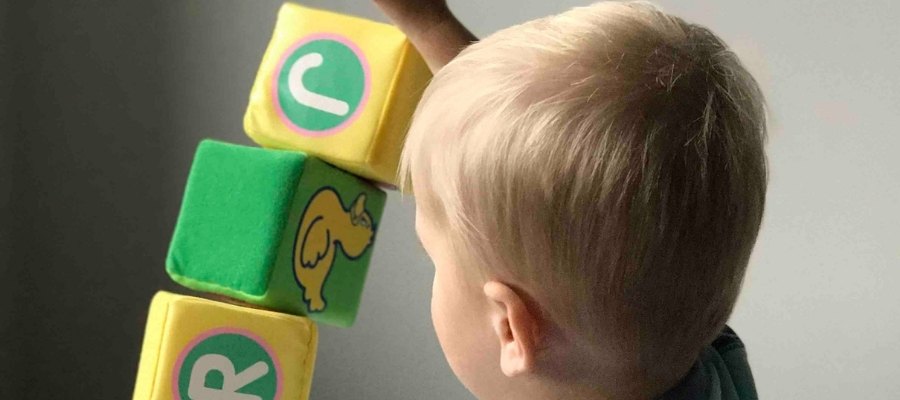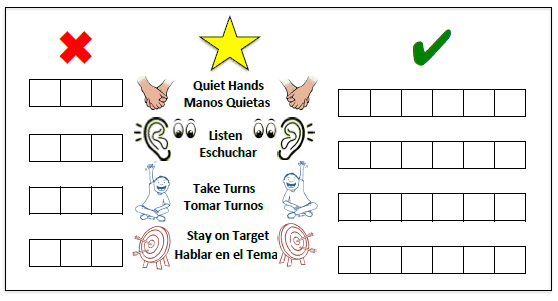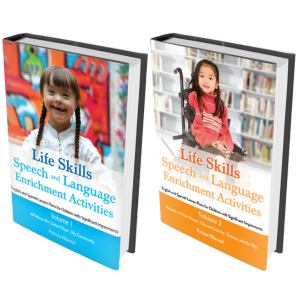We have all had the experience where our intervention is less productive because of difficult behaviors in speech therapy. Here is a behavior system that I have found to be successful in group settings. If you laminate the chart at the bottom, you can use it across multiple sessions with dry erase markers. This is how it works:

At the beginning of each session
The students quickly review the rules listed/pictured in the middle (e.g., “I need to listen with my eyes and ears/Necesito escuchar con mis ojos y oídos”).
Throughout the session
The students receive feedback on whether they follow the rules by simply writing a check or “X” in the boxes on the appropriate side of the rule. For example, if they are not touching/tapping their hands or getting out of their seats/lifting the front legs of their chair off the ground, every so often I write a check in the boxes on the right side of “Quiet hands/Manos quietas” to indicate good behavior for this rule. Or if they are speaking off topic to the point of inappropriate disruption, I immediately write an “X” in the boxes on the left of “Stay on target/Hablar en el tema” to indicate undesired behavior for this rule.
At the end of the session
The students receive stickers if the chart shows they demonstrated good behavior. If they receive three “X” marks on any one rule they do not get a sticker. The stickers they receive go on their own small piece of card stock with their name on it, and that I keep. Once they receive ten stickers on their piece of cardstock, they are allowed an incentive that we have already established (e.g., playing a certain preferred game, doing therapy outside, pencils/small “prize box” items, etc.).
This system is beneficial because:
- I’m able to give the students feedback on both desired behaviors and undesired behaviors, and I don’t have to stop what we are doing if I have to redirect undesired behaviors.
- It becomes a game for the students because the visual of how they are doing is always present–they remain motivated to get their sticker.
- The sticker cards keep the students motivated across multiple sessions (not just during one session) since their main incentive is only rewarded after ten stickers/sessions of good behavior.
- The students build a team dynamic since they have to work together to earn their daily stickers. I’ve even noticed them take ownership of the system by quietly redirecting their peers before I have the opportunity to write an “X”.
All Management of Behavior in Speech Therapy is a Work in Progress
There are some levels of behavior that this chart does not address. For example, if one child is consistently difficult and the rest of the group behaves well, I usually have to talk one-on-one with that student to promote his/her positive behavior. Generally though, group therapy sessions are significantly more productive with a system like this chart in place because it not only facilitates behavior in a fun way, but also prevents me from having to take time out of an already short session to reward/redirect behavior.
Download the chart for free here: Behavior in Speech Therapy
If you want more information on behavior in speech therapy, check out our course:
Overcoming Behavioral Roadblocks in Speech Therapy
Maria Mitidieri, M. S., CCC-SLP
Special thanks to Cristie Martinez, M.S., CCC-SLP, for her initial collaboration on this behavior chart.






This is great, would it be possible to offer a couple of thoughts?
Sure Thomas, Share your expertise! Or, let us know more about what you want to hear.
Scott
analogies in spanish
Hi Melissa,
I see your comment “analogies in Spanish” attached to our “Difficult Behavior in Speech Therapy” post. Were you answering a question from someone else or are you looking for information? I didn’t want to let your comment go without a response but wasn’t sure of the context of it. Thanks.
hi,
My name is Waqas & I’m from Pakistan, my son is 2.4 years old but doesn’t talk, just some words like (aa ae takaka) his mind works properly he knows how to use mobile phone which is game icon & which one is youtube and how to go back or forward on mobile… when we tickle he laughs, but doesn’t response to his name or any sound nearby apart from music just 3 seconds of any music & he’ll be on your lap to listen and watch,
Although he didn’t speak lately but he wasn’t like that before he used to learn things like opening lock with keys, draging a bench to climb on cupboards if we say the cup is hot No don’t touch it he used to learn but now hez in his own world no interest in toys, started nail biting, flapping arms when excited, he recognizes people bt i don’t know what happend to him.
i have consulted to pediatricians & psychiatrists as well who just said try to teach him things like a play group kid, play with him there is no medicine for this… his growth has also stopped, we don’t have any speech therapist in our city whom i can contact, Please guide mein he is my only child.
Thank You.
Hi Waqas,
Speech Therapy is a relatively new field and you are not alone. Many people in many countries are just beginning to add speech pathology programs in their country to build new professionals. The good news is that they have done research in places where there are no services and parents have been able to be trained to make great progress.
Please accept what I say here as suggestions. Without having met your son or completed an evaluation I can only share insights and not make a diagnosis. Development does stop for some children. Sometimes they can identify a reason such as seizures or toxin exposure but often they don’t know why it happens. If there is no medical support in your area, here are some things that you can do:
Seek out parents in your community that have children with communication delays. You may have to create this group but I guarantee you will find them. In the United States, 1/10 children have communcation delays.
Parents in rural communities and in other countries often become the speech therapist. Basically, you want to research “Early Intervention” and look for books to show you how to improve your son’s communication. This is actually fun. One huge suggestion, do not change your day, just change what you are doing every day to have more communication. Here are two books that are in English but that can get you started:
Early Intervention Games: Fun, Joyful Ways to Develop Social and Motor Skills in Children with Autism Spectrum or Sensory Processing Disorders
Early Intervention Every Day!: Embedding Activities in Daily Routines for Young Children and Their Families
And here are some resources to look at about development.
click on this and of course pay attention to only the English half of the resources
Articulation Norms for Spanish and English
Apples to Apples for Speech and Language
Best Regards,
Scott